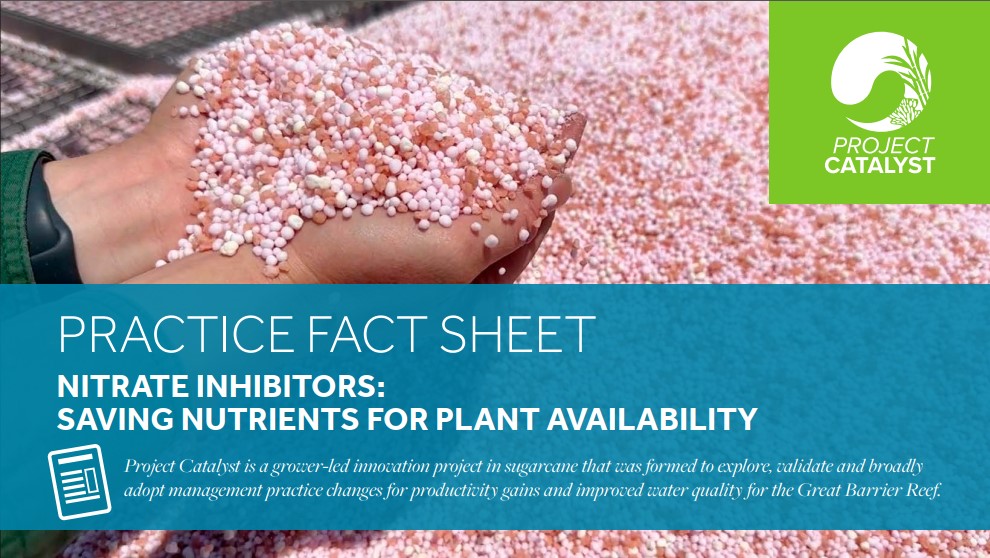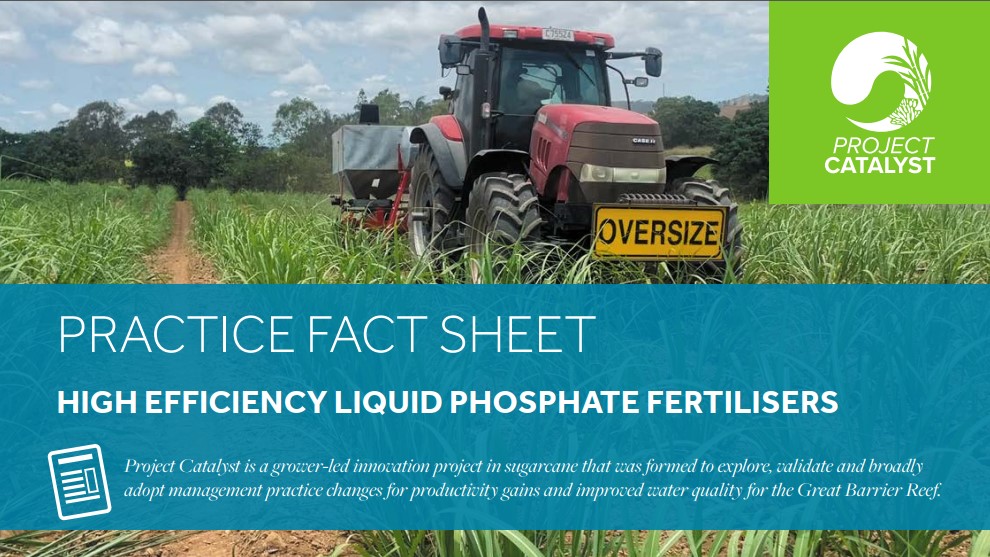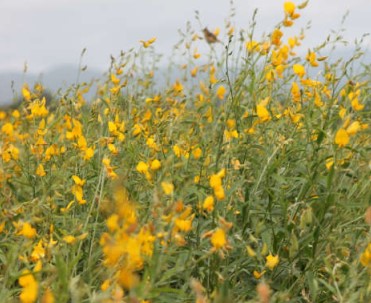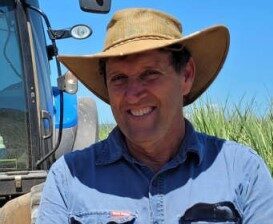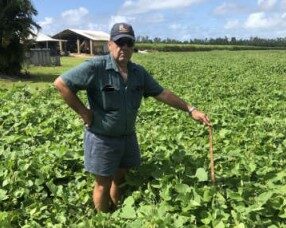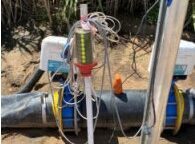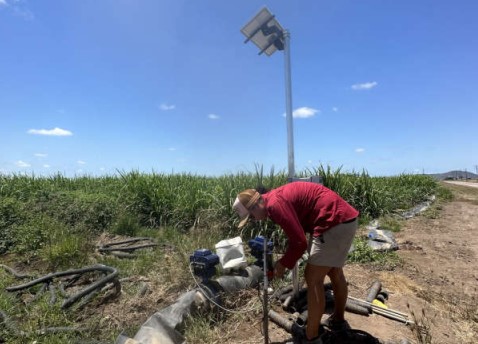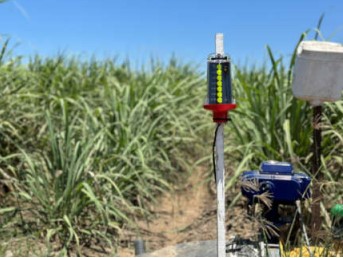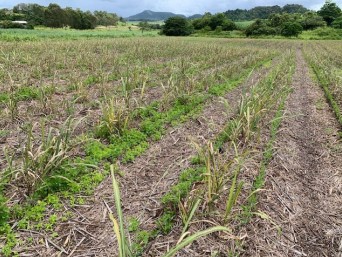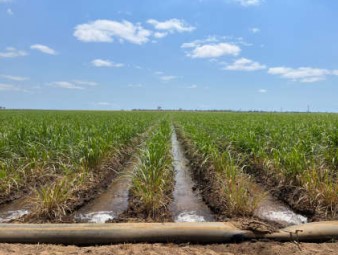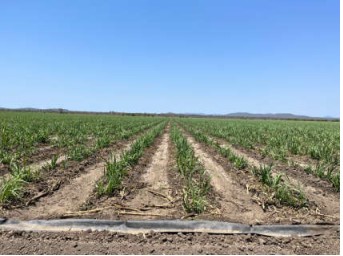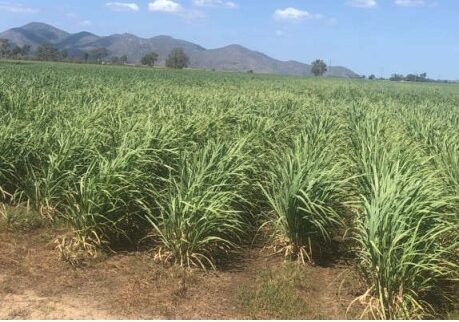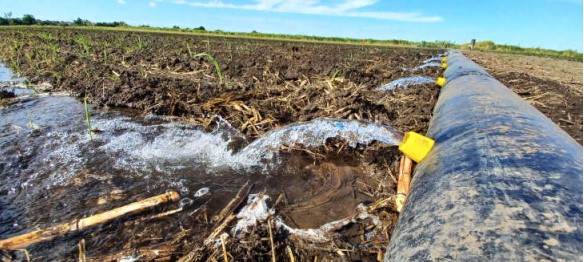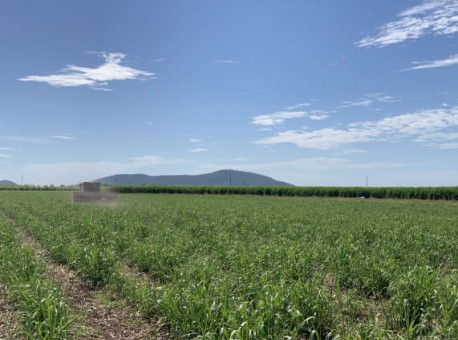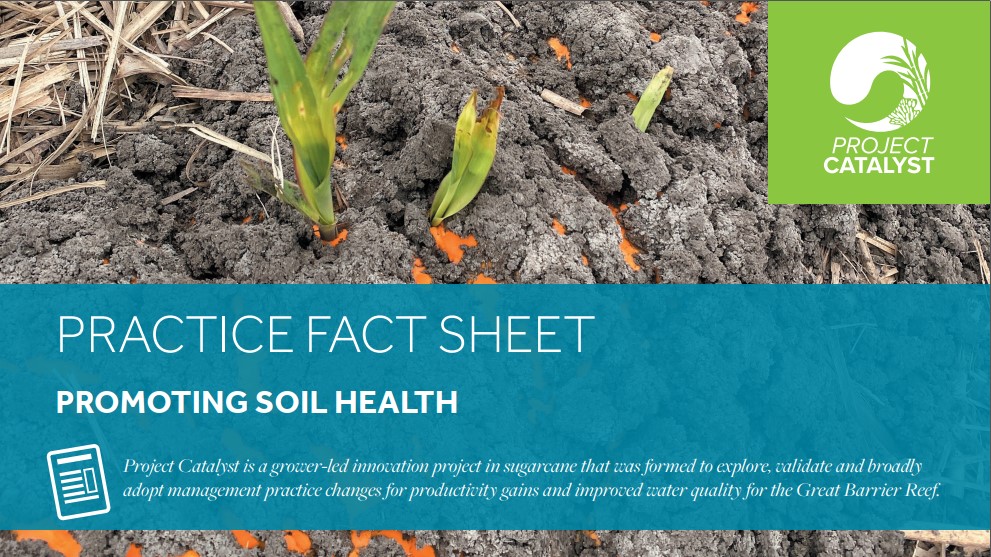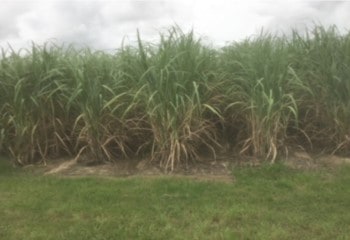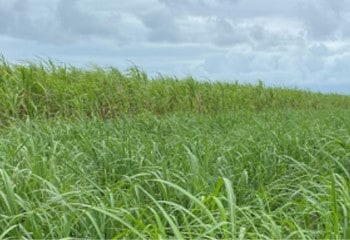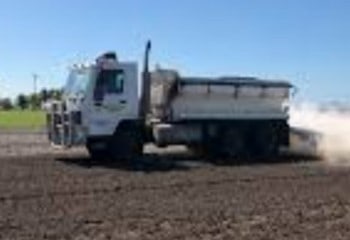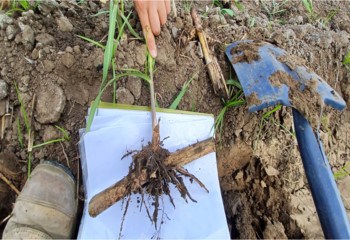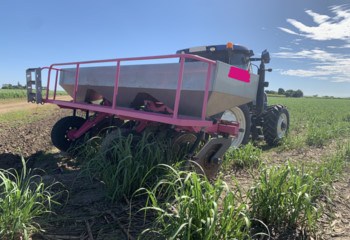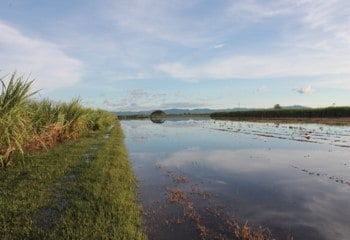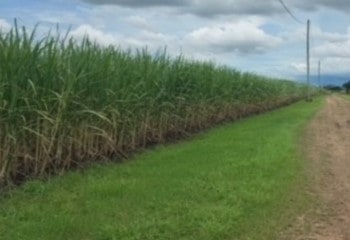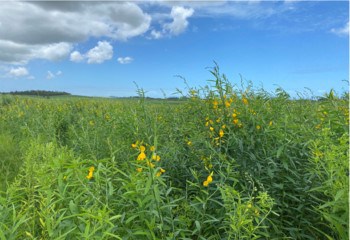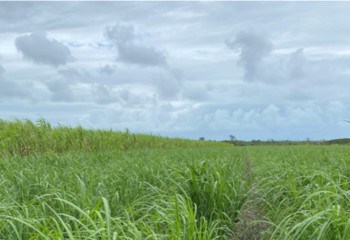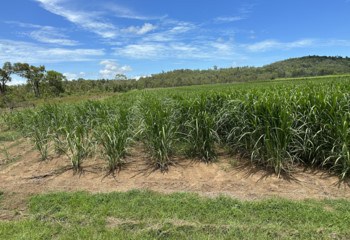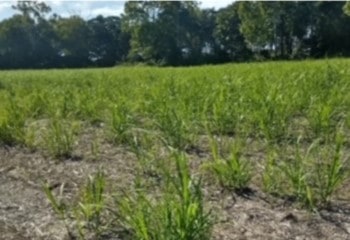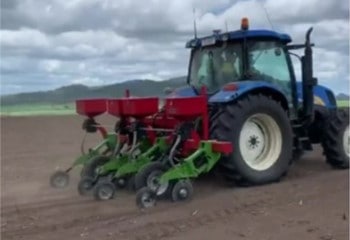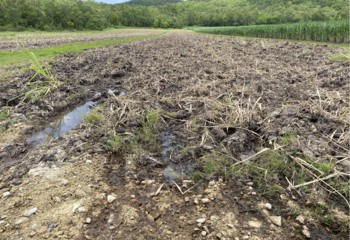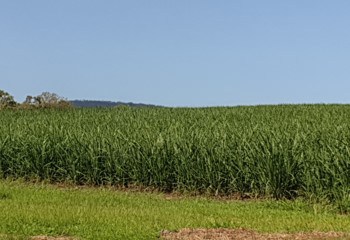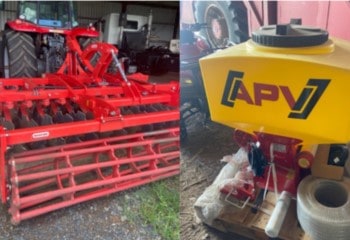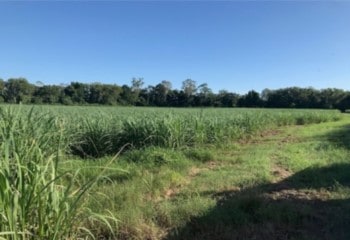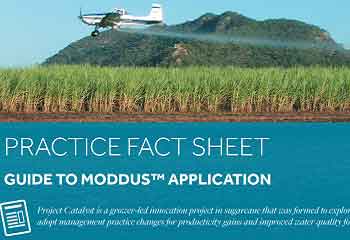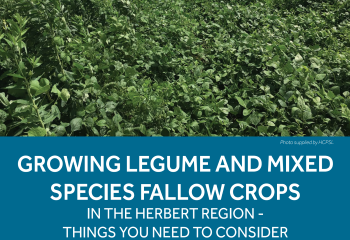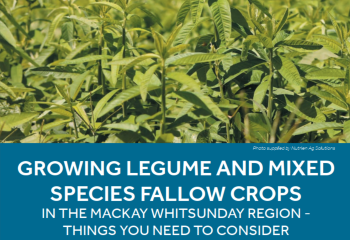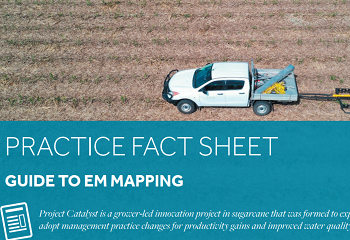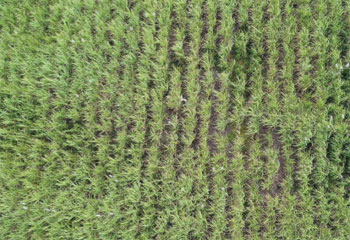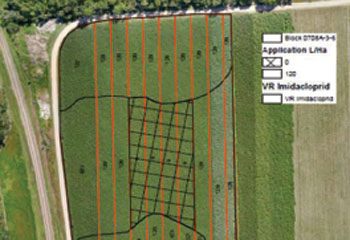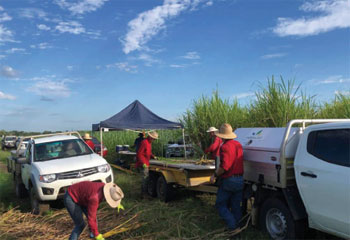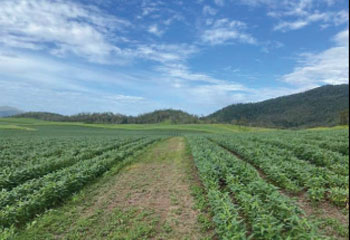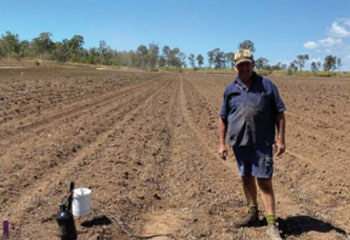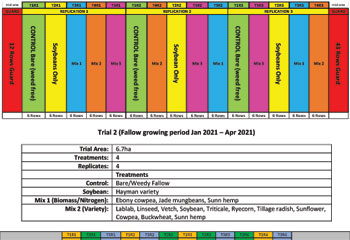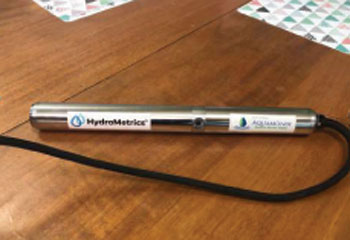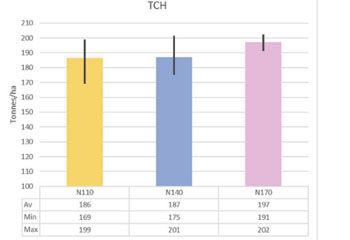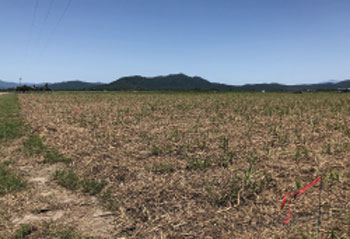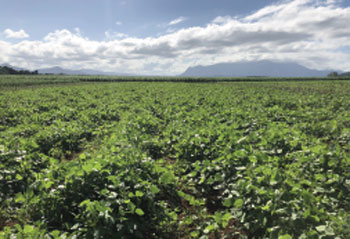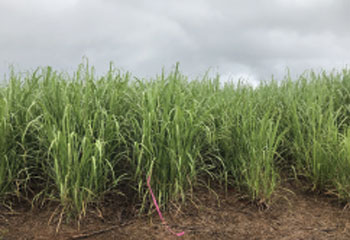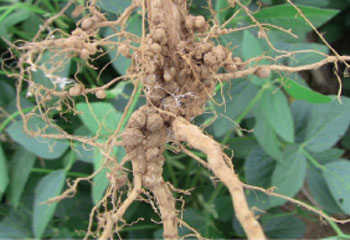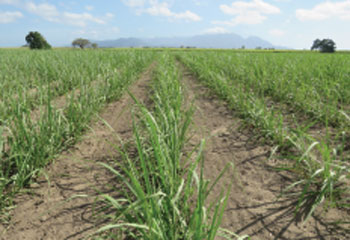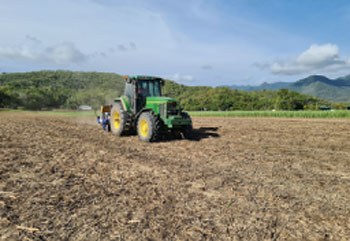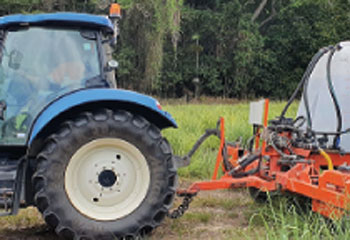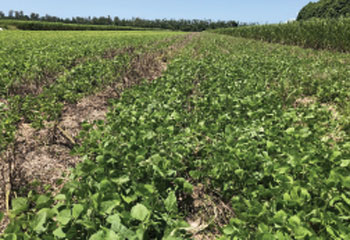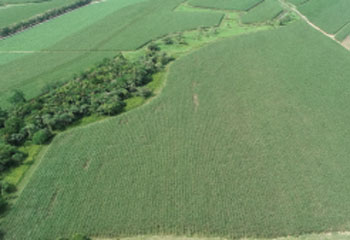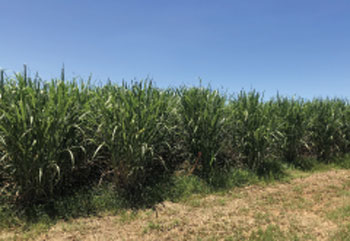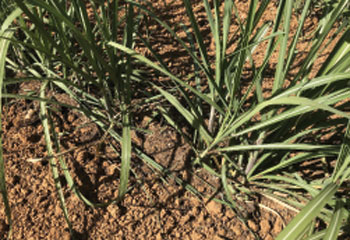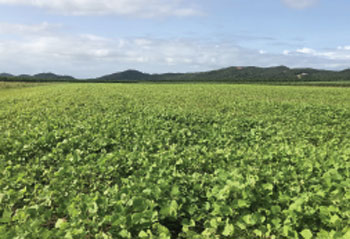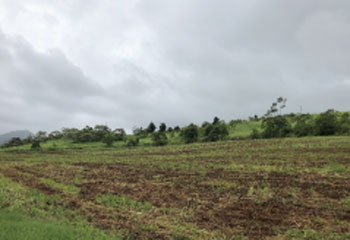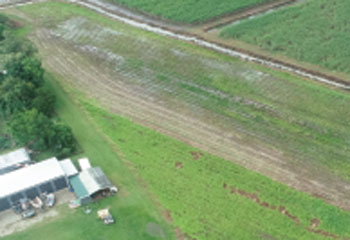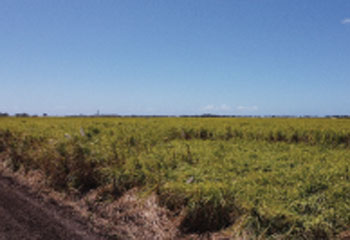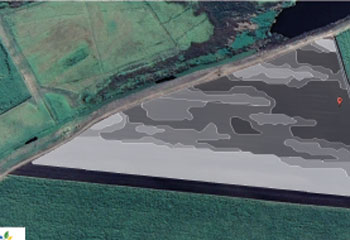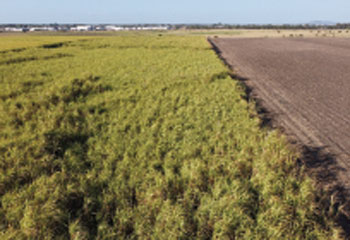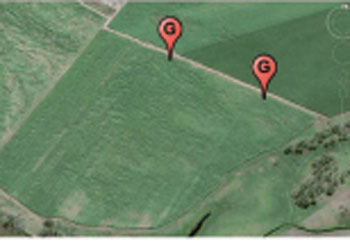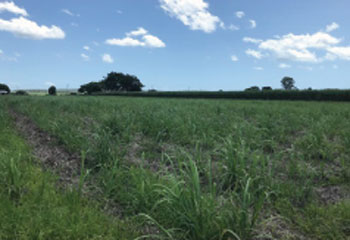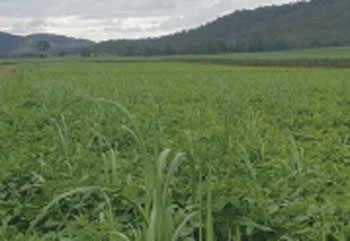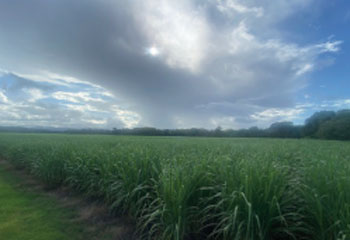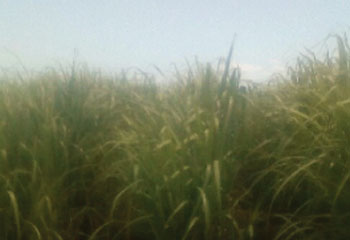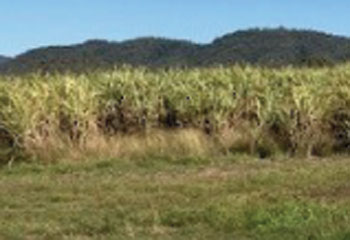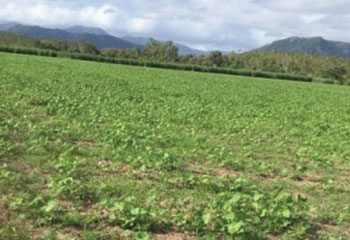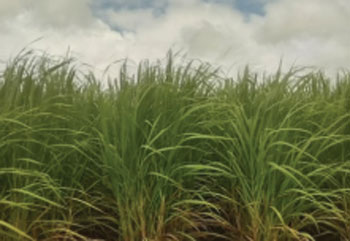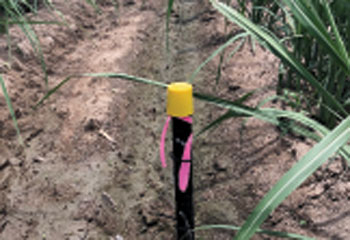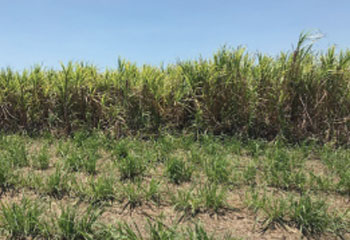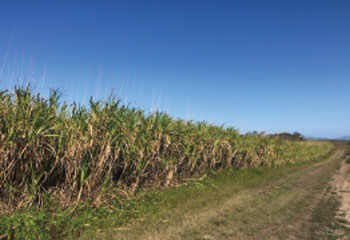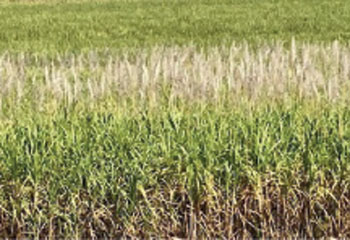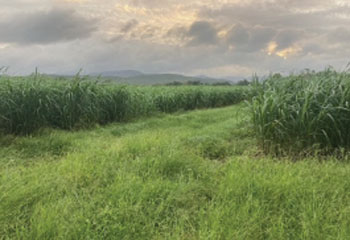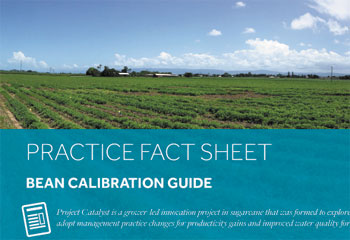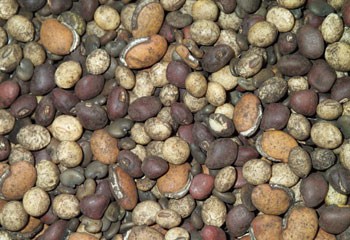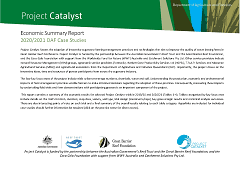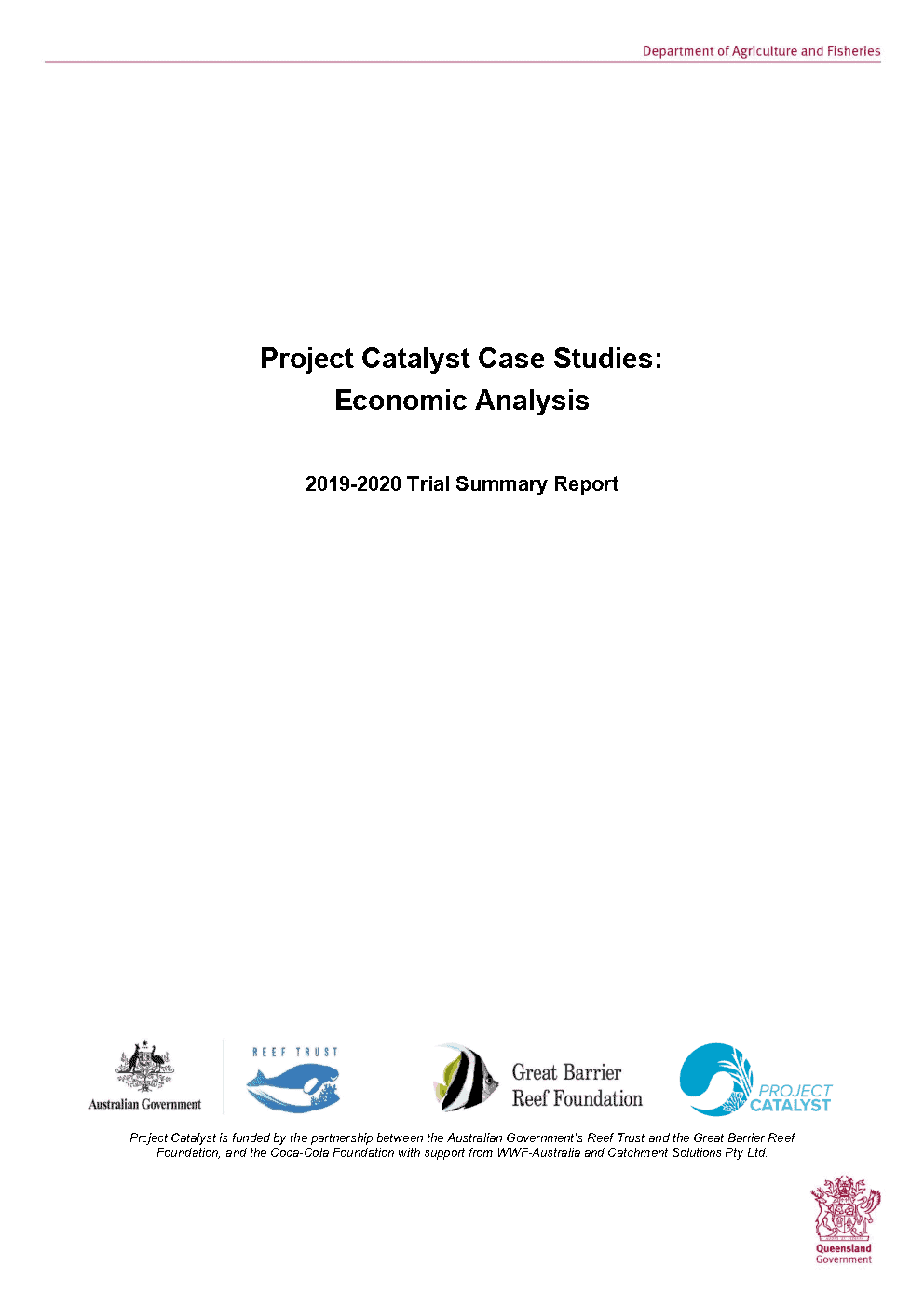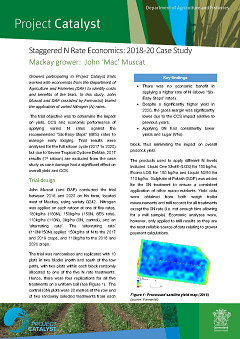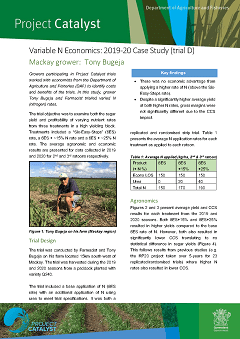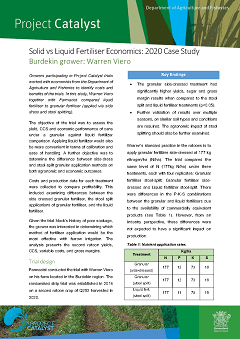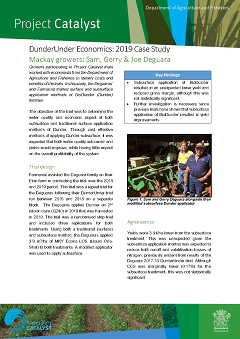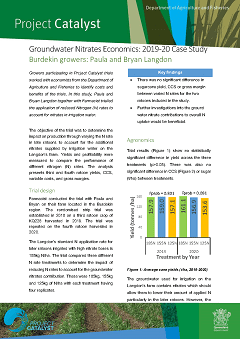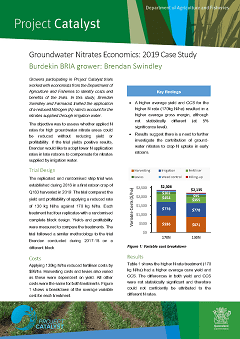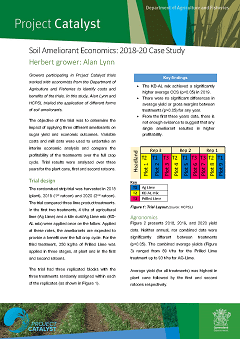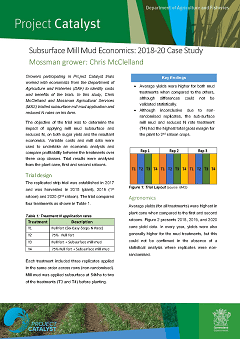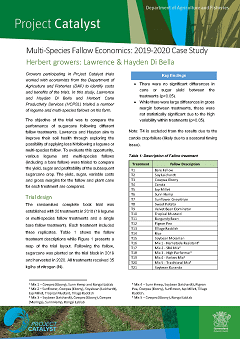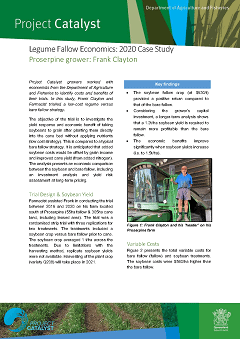Projects
Annual trial results and personal profiles of the innovative leaders in the Queensland sugar industry, backed up by the technical data of previous case studies.
Explaining the advantages of Nitrification Inhibitors, which slow the conversion of ammonium to nitrate in urea fertiliser.
Burdekin, Mackay, Wet Tropics
High Efficiency Liquid Phosphate Fertilisers
High Efficiency Phosphorus fertiliser products are more expensive than traditional phosphorus products due to higher manufacturing costs but most also have very important trace elements or growth promotants which are an added benefit to the crop and support productivity.
Mackay
PCCCF2023BAV52-2023
Plant Legume Cover Crops to Yield Benefits of Soil Health and Reduce Nitrogen to the Subsequent Plant Crop
Mackay
PCCCF2022BAV46-2023
Plant Soybean Cover Crops and Adopt Benefits of Soil Health and Reduce Nitrogen to the Subsequent Plant Crop
Burdekin
PCCCF2022BAV45-2023
Reduce Nitrogen Fertiliser Application to Sugarcane Plant Crops Following a Short Fallow Period of 3 to 5 Months
Burdekin
PCCCF2022BAV44-2023
Reduce Nitrogen Fertiliser Application to Sugarcane Plant Crops Following a Short Fallow Period of 3 to 5 Months
Burdekin
PCCCF2022BAV43-2023
Reduce Nitrogen Application by Introducing an Enhanced Efficiency Fertiliser to the Farm
Burdekin
PCCCF2022BAV41-2023
Optimising Irrigation Scheduling with Infield Sensors to Minimise Excess Nitrogen Loss and Increase Profitability
Burdekin, Mackay, Wet Tropics
Promoting Soil Health
A healthy soil is productive, sustainable, and profitable.
Burdekin, Mackay, Wet Tropics
NDVI: Satellite Imagery & Vegetation Indices
Normalised Difference Vegetation Index (NDVI) is a measure of the amount of living green vegetation.
Burdekin, Mackay, Wet Tropics
Mill Mud and Ash by-products
Taking advantage of mill mud and ash by-products
Mackay
PCCCF2022BAV46 – 2022
Reducing Nitrogen Application Rates on Ratoons Including Older Ratoons While Maintaining the Farms Productivity
Burdekin
PCCCF2022BAV45 – 2022
Reducing Nitrogen Application Rates on Ratoons Including Older Ratoons While Maintaining the Farms Productivity
Burdekin
PCCCF2022BAV44 – 2022
Reducing Nitrogen Application Rates on Older Ratoons While Maintaining the Farms Productivity
Burdekin
PCCCF2022BAV43 – 2022
Reducing Nitrogen Application Rates on Older Ratoons While Maintaining the Farms Productivity
Burdekin
PCCCF2022BAV41 – 2022
Reducing Nitrogen Rates in Response to High Groundwater Nitrate Irrigation Water in the Burdekin
Mackay
PCCCF2021BAV38 – 2022
Reduce Nitrogen Application in Sugarcane Plant Crops Across the Farm Following Productive Legume Cover Crops
Mackay
PCCCF2021BAV37 – 2022
Reduce Nitrogen Application in Sugarcane Plant Crops Following Well Established and Productive Cover Crops
Mackay
PCCCF2021BAV36 – 2022
Reduce Nitrogen Application in Sugarcane Plant Crops Across the Farm Following Productive Legume Cover Crops
Mackay
PCCCF2021BAV35 – 2022
Reduce Nitrogen Application in Sugarcane Plant Crops Across the Farm Following Productive Legume Cover Crops
Mackay
PCCCF2021BAV34 – 2022
Reduce Nitrogen Application on Old Ratoon and Lower Yielding Blocks While Maintaining the Farms Productivity
Mackay
PCCCF2021BAV33 – 2022
Reduced Nitrogen Application on Old Sugarcane Ratoons and Plant Blocks Following Legume Cover Crops
Mackay
PCCCF2021BAV32 – 2022
Planting of Legume Cover Crops Reducing Nitrogen Requirements to Subsequent Sugarcane Plant Crops
Mackay
PCCCF2021BAV31 – 2022
Planting of Legume Cover Crops Reducing Nitrogen Requirements to Subsequent Sugarcane Plant Crops
Mackay
PCCCF2021BAV29 – 2022
Reducing Nitrogen Application on Old/late cut Ratoon Blocks while maintaining the Farms Productivity
Mackay
PCCCF2021BAV28 – 2022
Reducing Nitrogen Application on Old/late cut Ratoon Blocks while maintaining the Farms Productivity
Mackay
PCCCF2021BAV27 – 2022
Reduce Nitrogen Application in Sugarcane Plant Crops Across the Farm Following Productive Legume Cover Crops
Mackay
PCCCF2021BAV26 – 2022
Reduced Nitrogen Application on Old Sugarcane Ratoons While Maintaining Farms Productivity
Burdekin, Mackay, Wet Tropics
Guide to Moddus Application
Moddus is a foliar absorbed plant growth regulator.
Mackay
Mackay WS Growing Legume and Mixed Species Fallow Crops
Growing legume and mixed species fallow crops.
Burdekin, Mackay, Wet Tropics
EM Mapping
Electromagnetic induction (EM) mapping is a form of precision agriculture that uses a sensor to measure electrical conductivity in soils at various depths.
Wet Tropics
Michael Waring
Assessing the use of precision agriculture technique of variable rate technology
Burdekin
Andrew Cross
Investigating the effect of various nitrogen rates following a harvested legume crop.
Wet Tropics
PCCCF2020BAV21
Mixed Legume Fallows and Lower N Rates in Plant Cane After a Successful Legume Crop
Wet Tropics
PCCCF2020BAV19
Mixed Legume Follows and Lower N Rates in Plant Cane After a Successful Legume Crop
Burdekin
PCCCF2020BAV4
EM Mapping to Support Implementing Precision Farm Management & Installing Irrigation Scheduling Tools
Burdekin
PCCCF2020BAV3
EM Mapping to Support Implementing Precision Farm Management & Installing Irrigation Scheduling Tools
Burdekin
PCCCF2020BAV2
EM Mapping to Support Implementing Precision Farm Management & Installing Irrigation Scheduling Tools
Burdekin
Greg Macelroy
Monitoring In-Field Soil Moisture of Varying Growth Zones to Accurately Schedule Irrigation Events
Mackay
PCCCF2021BAV37
Reducing Nitrogen Application on Ratoon Blocks and Planting of Legume Crops to Fallow Blocks
Mackay
PCCCF2021BAV33
Reducing Nitrogen Application on Incoming Season by Planting Legume Crops to Fallow Blocks
Burdekin, Mackay, Wet Tropics
Bean Calibration Guide
A practice fact sheet for calibrating bean planters.
Wet Tropics
Types of inoculants and things to consider when using them
A practice fact sheet for types of inoculants and things to consider when using them.
Burdekin
Project Catalyst Summary Economics Analysis Report.
This is a summary of the Project Catalyst Full Economics Analysis Report.
Burdekin
Project Catalyst Full Economics Analysis Report.
You can read all about the fourteen trials here.
Burdekin
Warren Viero
Trial to compare liquid fertiliser with granular fertiliser applied via side dress and stool splitting.
Mackay
Sam, Gerry, and Joe Deguara
Trial and surface and subsurface application methods of BioDunder fertiliser.
Burdekin
Paula and Bryan Langdon
Trial of the application of reduced nitrogen rates to account for nitrates in irrigation water.
Burdekin
Brendan Swindley
Trial of the application of a reduced nitrogen rate to account for the nitrates supplied through irrigation water.
Wet Tropics
Chris Condon
Trial of regenerative agriculture practices of RegenAG including a multi-species fallow.
Burdekin
Bryan Langdon
To develop a site-specific nitrogen reduction rate that the grower can implement on their blocks that are irrigated with underground water high in nitrates.

